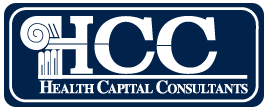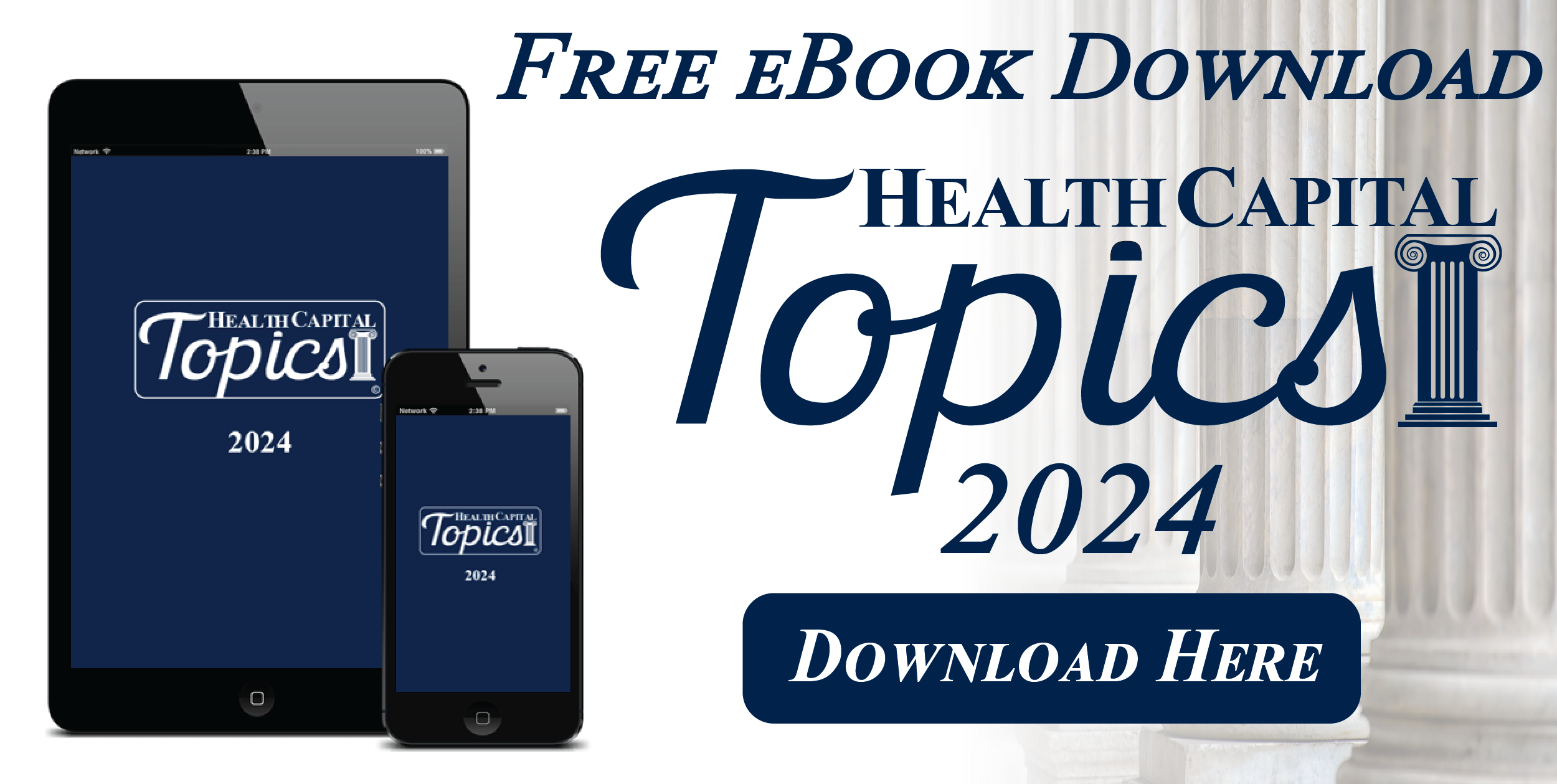An October 2025 Health Affairs study found that payment equity between facilities owned by hospitals, known as hospital outpatient departments (HOPDs), and independent outpatient facilities such as ambulatory surgery centers (ASCs), is still far from reality. Comparing payments for common procedures, researchers found commercial prices were 78% higher in HOPDs compared to ASCs, although payment differentials varied considerably.1 This Health Capital Topics article reviews the article and potential policy implications.
Both private and public insurers pay substantially higher amounts for services provided in an HOPD than it does when the same service is provided in a physician’s office or an ASC.2 For example, previous research has found that HOPDs earn more than twice what an independent outpatient facility earns for providing the same services.3 Another study found Medicare’s allowed payment amount was 67% higher for a colonoscopy, and 62% higher for an MRI, in an HOPD compared to an independent outpatient facility.4 To sidestep the lower payment rates, some physician offices have been purchased and relabeled as an off-campus component for the HOPD, resulting in higher payments.5 For many services, there is very little evidence to demonstrate that the quality of care is higher in an HOPD setting.6 Medicare’s payment disparity also affects the rates of payment under private health insurance plans, since these plans typically use Medicare’s system as a basis for the payment of physicians and hospitals.7
Utilizing 2024 Transparency in Coverage8 data, the Health Affairs study analyzed the 2024 contracted rates for three national insurers – BlueCross BlueShield (BCBS), Cigna, and UnitedHealthcare – which insurers account for approximately 68% of the commercial insurance market.9 This data included over 31,200 unique payor-provider contracts (18,160 of which were for HOPDs and 13,079 of which were for ASCs) for 3,644 facilities across the U.S.10 The researchers analyzed prices for 13 of the 15 most common outpatient procedures.11 Across those 13 procedures, “unadjusted commercial HOPD prices were 65-158 percent above ASC prices, averaging 78 percent across all procedures (procedure-weighted).”12 In comparison, “Medicare reimbursed HOPDs an average of 97 percent above ASCs for the same thirteen procedures.”13 In other words, HOPD payments were nearly $1,500 more than ASC payments, ranging from a $951 difference for a facet joint injection to over $2,600 for knee arthroscopy or surgery.14
Not only did prices vary across procedures, but they also varied across insurers. Among the three insurers, Cigna paid the lowest overall rates, 27% less overall than UnitedHealthcare, which paid the highest rates.15 In fact, the researchers assert that “[if] United and BCBS paid Cigna’s average HOPD rates for the thirteen procedures we examined, together they would save approximately $1.4 billion annually.”16 Digging into the insurer differential, the researchers found that “Cigna was not achieving lower prices primarily through negotiating leverage but instead was achieving lower rates through the construction of lower-price HOPD networks.”17
The Health Affairs study’s results “have important implications for purchasers and policy makers.”18 The findings “suggest that: (1) site payment differentials are a source of substantially higher payments in commercial markets”; and (2) “given current HOPD and ASC markets, it is possible for insurers to selectively contract with lower-price providers, reduce spending, and continue to meet the needs of members.”19 This research highlights an issue that lawmakers have been angling to solve for nearly a decade. A 2023 congressional hearing focusing on the promotion of competition and transparency in healthcare referenced 17 bill drafts, several of which related directly to site-neutral payments,20 some of which are still circulating around Capitol Hill. In 2024, the New York State legislature debated a bill to introduce commercial site-neutrality payment policy for 66 services, and cap payments for those services at 150% of Medicare.21 In its 2026 Outpatient Prospective Payment System (OPPS) proposed rule, the Centers for Medicare & Medicaid Services (CMS) suggested expanding site-neutral payment policies to drug administration services, which CMS predicted would reduce OPPS spending by $280 million.22
The implications of the passage of any such legislation could be significant. A 2023 analysis by Blue Cross Blue Shield (BCBS) found that adopting site-neutral payment policies would result in estimated Medicare savings of over $471 billion over the next decade.23 Medicare’s savings would be approximately $202 billion for the first year, while enrollees would save approximately $67 billion on cost sharing and an additional $67 billion on Part D premiums.24 Further, private health insurance plan premiums would be reduced by 0.75% in aggregate (due to the link between private insurer payment rates and Medicare payment rates).25 The reduction in private insurance premiums would increase federal tax revenues by $29 billion, meaning that adopting this site-neutral payment policy would result in total federal government savings of $231 billion in the first year alone.26 Moreover, private plan enrollees would save $18 billion on cost sharing from the payment of lower rates, resulting in total out-of-pocket savings of $152 billion for enrollees in both private and Medicare plans.27
Despite the proposed policy’s potential savings for both Medicare and private health insurance plans, hospital advocacy groups and stakeholders have voiced clear opposition to such a payment adjustment. The American Hospital Association (AHA) stated that it “has repeatedly opposed additional site-neutral payment cuts to hospital outpatient departments, which would harm beneficiaries, especially those in rural and vulnerable communities.”28 The AHA also argues that site-neutral payments “would result in a cut to hospitals of $11.6 billion in the first year and $180.6 billion over 10 years.”29 The Federation of American Hospitals (FAH) has similarly asserted that:
“Site-neutral payments do not consider one simple fact: hospitals and physician offices are not the same. Hospitals provide critical services to entire communities, including 24/7 access to emergency care and disaster relief. They need to maintain the ability to treat high acuity patients who require more intense care, and therefore require a different payment structure.”30
Experts expect that hospitals and lobbying groups will go to great lengths to stop any new legislation from moving forward.31 Eliminating the higher payments to hospital-owned facilities could even result in hospitals reducing the services provided or access to care for patients.32 However, the true impact of such a proposed policy is (as of yet) indeterminate.
“Commercial Insurers Paid More For Procedures At Hospital Outpatient Departments Than At Ambulatory Surgical Centers” By Matthew P. Maughan, et al., Health Affairs, Vol. 44, No. 10 (October 2025), https://www.healthaffairs.org/doi/full/10.1377/hlthaff.2025.00297 (Accessed 10/23/25).
“Site-neutral payment policies could save Medicare $471 billion” By Jeff Lagasse, Healthcare Finance, March 6, 2023, https://www.healthcarefinancenews.com/news/site-neutral-payment-policies-could-save-medicare-471-billion (Accessed 10/23/25).
“The Wonky Policy That’s Got Hospitals on High Alert” Tradeoffs, May 4, 2023, https://tradeoffs.org/2023/05/04/site-neutral-payment-medicare/ (Accessed 5/17/23).
Lagasse, Healthcare Finance, March 6, 2023.
The 2024 Transparency in Coverage rule expanded upon the 2021 Hospital Price Transparency Rule, which requires (among other things) health plans to publicly report an online price comparison tool for all covered items and services. “Transparency in Coverage Rule Overview” Blue Cross Blue Shield North Dakota, https://www.bcbsnd.com/employers/group-insurance-101/understanding-transparency-in-coverage-rule#:~:text=The%20Transparency%20in%20Coverage%20rule%20requires%20health,Phone%20*%20Online%20*%20Paper%20upon%20request (Accessed 10/23/25).
“Commercial Insurers Paid More For Procedures At Hospital Outpatient Departments Than At Ambulatory Surgical Centers” By Matthew P. Maughan, et al., Health Affairs, Vol. 44, No. 10 (October 2025), https://www.healthaffairs.org/doi/full/10.1377/hlthaff.2025.00297 (Accessed 10/23/25).
“Congress seems inclined to significantly expand site-neutral payment policies in Medicare” By Nick Hut, Healthcare Financial Management Association, May 12, 2023, https://www.hfma.org/payment-reimbursement-and-managed-care/medicare-payment-and-reimbursement/congress-seems-inclined-to-expand-site-neutral-payment-policies/ (Accessed 5/18/23).
“Senate Bill S9952: 2023-2024 Legislative Session” The New York State Senate, https://www.nysenate.gov/legislation/bills/2023/S9952 (Accessed 10/23/25).
“Calendar Year 2026 Hospital Outpatient Prospective Payment System (OPPS) and Ambulatory Surgical Center Proposed Rule (CMS-1834-P)” Centers for Medicare and Medicaid Services, July 15, 2025, https://www.cms.gov/newsroom/fact-sheets/calendar-year-2026-hospital-outpatient-prospective-payment-system-opps-and-ambulatory-surgical (Accessed 7/21/25).
Healthcare Finance, March 6, 2023.
“AHA opposes MedPAC recommendations to Congress on site-neutral, Part B drug, wage index policies” American Hospital Association, April 13, 2023, https://www.aha.org/news/headline/2023-04-13-aha-opposes-medpac-recommendations-congress-site-neutral-part-b-drug-wage-index-policies (Accessed 5/17/23).
“Fact Sheet: Medicare Site-neutral Legislative Proposals Would Jeopardize Access to Care” American Hospital Association, https://www.aha.org/fact-sheets/2023-05-22-fact-sheet-medicare-site-neutral-legislative-proposals-would-jeopardize-access-care (Accessed 5/24/23).
“FAH Statement for the Record” Federation of American Hospitals, April 25, 2023, https://www.fah.org/wp-content/uploads/2023/04/FAH-Statement-for-the-Record-EC-Health-Sub-Hearing-4.26.23.pdf (Accessed 5/17/23).





